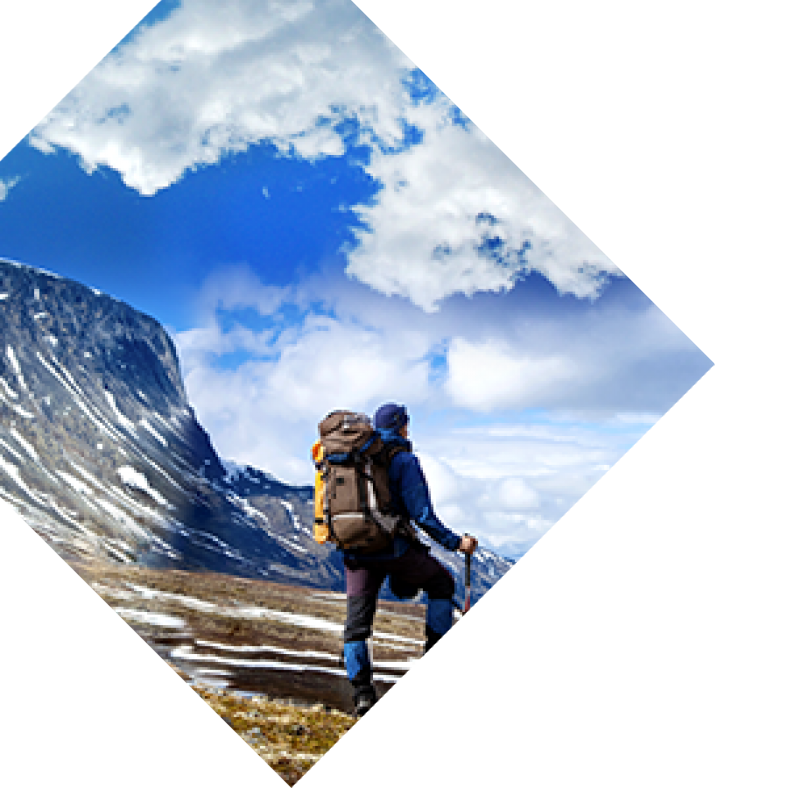If you are a lifelong hiker, there is a good chance you have seen your fair share of foot problems. Blisters, rolled ankles, torn nails, swollen legs, and bloody toes all come with the territory and, for the most part, are accepted as part of “the fun.” But, another very real potential problem for hikers is an ailment known as plantar fasciitis. This situation causes serious foot pain while hiking that can prevent outdoor enthusiasts from hitting the trail. Fortunately, there are a few ways to help solve the problem, beginning with proper hiking boots. While there is no single pair of shoes to solve the problem, the quality of your footwear will help enormously. Before we get into those specifics, let’s take a look at what plantar fasciitis is and how it is caused. 
What is Plantar Fasciitis?
Plantar fasciitis (PLAN-ter fash-ee-EYE-tus) is the most common cause of heel pain. One in ten people will get it in their lifetime. While prevalent, many individuals don’t know what it is. The name is derived from the plantar fascia, the ligament that runs from your heel to your toes, supporting the arch of your foot. If this tissue gets weakened or irritated, it causes severe pain in your heel or bottom of your foot. The most localized area for pain is roughly four centimeters forward from the back of your heel. This area may be quite painful to the touch. Frequently, the pain is the most severe in the morning when you first set your feet on the ground after waking. It is also highly uncomfortable when you stand up after sitting or resting for long periods of time. In fact, many individuals guess that they have fractured a bone due to the intensity of the pain!
What Causes Plantar Fasciitis?
It is unfortunate that plantar fasciitis is so common since it can be downright excruciating. While the causes are not entirely clear, we do know that the ailment is due to a strained plantar fascia ligament. If this tissue is repeatedly strained, tiny tears can appear, causing even more discomfort and swelling. This is more likely in the following circumstances:
- Your feet excessively pronate (or roll inward)
- Your Achilles tendon or calves are very tight
- You have high arches on your feet
- You stand on your feet a lot, especially on hard surfaces
- You have very flat feet
- You are overweight (some studies have shown that obesity is seen in 70 percent of patients with plantar fasciitis)
- Your legs are different lengths
- Your shoes don’t fit or are worn
Who Suffers from Plantar Fasciitis?
In particular, plantar fasciitis is predominantly seen in middle-aged individuals (ranging from 40- to 60-years old). Interestingly enough, it is twice as likely to be found in women as in men and is typically seen in one foot and not the other (although you can develop the problem in both feet). Additionally, athletes are prone to this problem. Both road runners and hikers see a lot of plantar fasciitis.
What are the Best Hiking Boots for Plantar Fasciitis?
As you can imagine, hiking with plantar fasciitis is uncomfortable at best and downright impossible at worst. In fact, many doctors recommend complete and total rest to help remedy the inflamed ligament. This can be frustrating for a hiker who just wants to hit the trail!
Footwear to Avoid
Doctors will recommend that you re-evaluate your footwear. In particular, hard surfaces and barefoot strolls are not advised as these exacerbate the pain. Worn shoes are also a bad idea since they don’t have much cushion or support left to help reinforce the muscles of your foot. If your shoe is truly a goner, wearing it is akin to going barefoot. Likewise, doctors often suggest that you opt for a laced-up shoe rather than sandals for the same supportive reasons. The catch with plantar fasciitis is that it can be tough to treat, so the main idea is to prevent the pain before it even begins.
Plantar Fasciitis Prevention
Start by choosing the best hiking boots for plantar fasciitis. As previously noted, there is no single pair of boots that will be the magical footwear that stands between you and this foot ailment. However, there are a few factors that may help and are worthy of consideration when choosing your hiking shoes. First of all, look for hiking shoes that have good arch support. If you have flat feet, you may want to consider adding special insoles into your footwear to help with bonus support. One study found that easy over-the-counter cushioned insoles improved the pain by 25-34 percent. Secondly, try to choose a hiking boot that has a wide, cushioned heel. This strong shock absorption and extra cushioning will comfort your heel while allowing your plantar fascia time to recover without additional stress. It is not a bad idea to look for a hiking boot with a removable insole, too. In having a removable insole, you can first try out the included insole to see if it offers your foot enough support. If it does not, it is an easy swap to remove the included insole and insert an over-the-counter insole that offers more cushion and guidance for your foot’s anatomy. This will be a huge benefit to preventing you from experiencing future foot pain, so it’s a useful nicety to have in a shoe. Keep in mind, while a new insole may help your foot, it might impact the breathability of your boot.
What’s the Right Pair for You?
Above all, remember that humans are different. We all have different feet, so various things will work for different people. When I experienced plantar fasciitis, I solved my foot pain with a different pair of shoes than my friend used to fix hers. Each of us is unique and that means there is no one-size-fits-all solution to the plantar fasciitis problem. Regardless of your situation, remember that taking care of your foot pain while hiking is of utmost importance. Your body comes first and it is paramount to listen to it. The beauty of nature and its trails will still be waiting for you once you are all healed up, so there is no need to rush anything. Take care of yourself, and we will see you on the trails! Editor’s Note: While the tips above will start you off on the right foot, we advise you consult your doctor to find the best option for your body.


